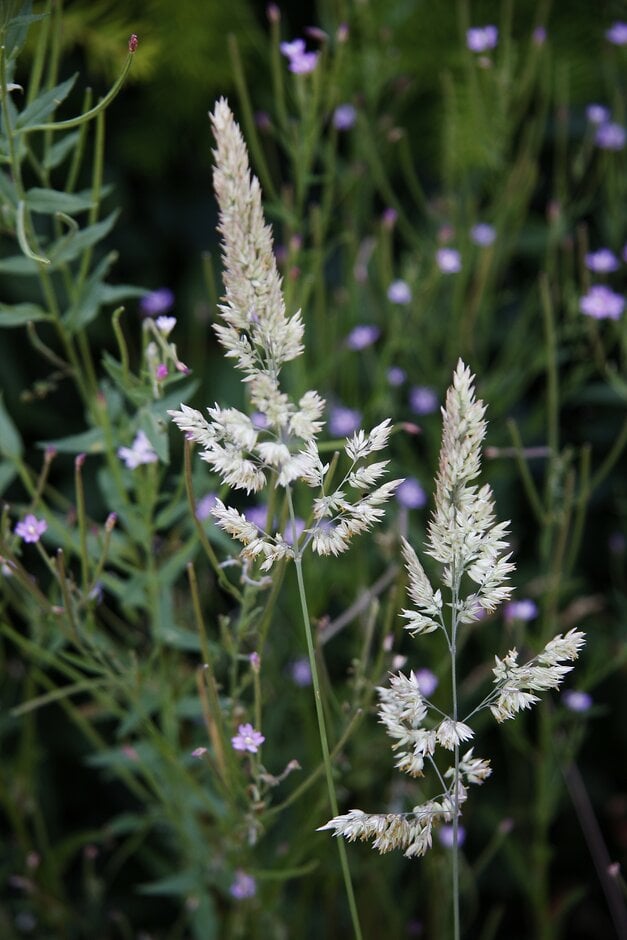Holcus lanatus
Yorkshire fog
Densely tufted, native perennial grass about 1m tall, with softly-hairy, upright stems, flat grey-green leaves and purplish-red tinged single spikelets produced at the end of the stems in summer, followed by greyish-pink seed heads
Other common names
dart grassduffel grass
see morehose grass
meadow soft grass
midge grass
rot grass
soft grass
velvet grass
maswellt
Synonyms
Avena lanataSize
Ultimate height
0.5–1 metresTime to ultimate height
2–5 yearsUltimate spread
0.5–1 metresGrowing conditions
Moisture
Moist but well–drainedpH
Acid, Alkaline, NeutralColour & scent
| Stem | Flower | Foliage | Fruit | |
| Spring | Grey Silver Green | |||
|---|---|---|---|---|
| Summer | Red Purple | Grey Silver Green | ||
| Autumn | Grey Silver Green | Grey Silver Pink | ||
| Winter |
Position
- Full sun
- Partial shade
Aspect
West–facing or South–facing or East–facing
Exposure
Exposed or Sheltered Hardiness
H7Botanical details
- Family
- Poaceae
- Native to GB / Ireland
- Yes
- Foliage
- Semi evergreen or Evergreen
- Habit
- Tufted
- Genus
Holcus can be annual or rhizomatous perennial grasses, with soft, linear leaves and dense, pale green or pinkish flowering panicles in summer
- Name status
Correct
- Plant range
- Eurasia
How to grow
Cultivation
Grows in any poor to moderately fertile, moist but well-drained soil and may appear in lawns - see coarse grasses in lawns for more information
Propagation
Propagate by seed or propagate by division
Suggested planting locations and garden types
- Prairie planting
- Wildflower meadow
- Wildlife gardens
Pruning
Deadhead if self-seeding becomes a problem
Pests
Generally pest-free
Diseases
Generally disease-free
Get involved
The Royal Horticultural Society is the UK’s leading gardening charity. We aim to enrich everyone’s life through plants, and make the UK a greener and more beautiful place.
